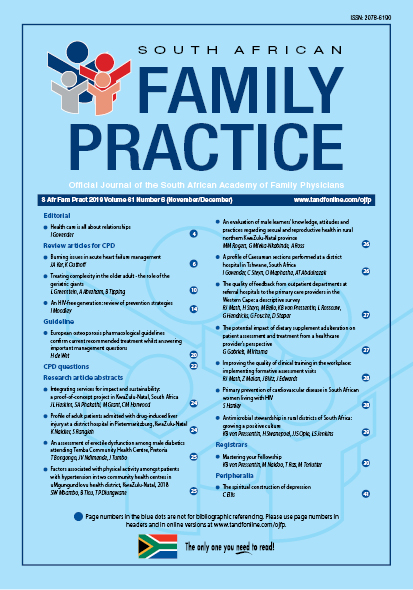Factors associated with physical activity amongst patients with hypertension in two community health centres in uMgungundlovu health district, KwaZulu-Natal, 2018
Abstract
Background: Hypertension (HPT) is a global public health challenge. It predisposes to cardiovascular diseases, kidney diseases and disability as well as contributing to high death rates. HPT is increasing tremendously in sub-Saharan Africa with HPT-related mortality risk having increased by 25% in less than 10 years in South Africa. Physical activity is a cost-effective way of reducing, controlling and preventing hypertension. The aim of the study was to establish the level of physical activity, and factors associated with physical activity, amongst patients with hypertension, in two community health centres in uMgungundlovu Health District, KwaZulu-Natal, 2018.
Methods: An observational, cross-sectional descriptive study with an analytic component was implemented. Data were collected utilising an interviewer-administered questionnaire. Frequency distribution tables and the chi-square test were used in the analysis of data. A p-value less than 0.05 was deemed statistically significant.
Results: A total of 374 questionnaires were administered of which 373 were adequately completed, yielding a response rate of 99.7%. The results showed that 39.1% were highly physical active, 32.4% were moderately physical active and 28.4% had low physical activity. Age, marital status, employment status and level of education were significantly associated with physical activity. Major barriers to physical activity included health problems and having no time to exercise. Health-related reasons were reported to be the major motivator towards physical activity.
Conclusion: Over a third of the participants presented with high levels of physical activity. Health education should focus on promoting physical activity for HPT clients.
The full article is available at https://doi.org/10.1080/20786190.2019.1664085

